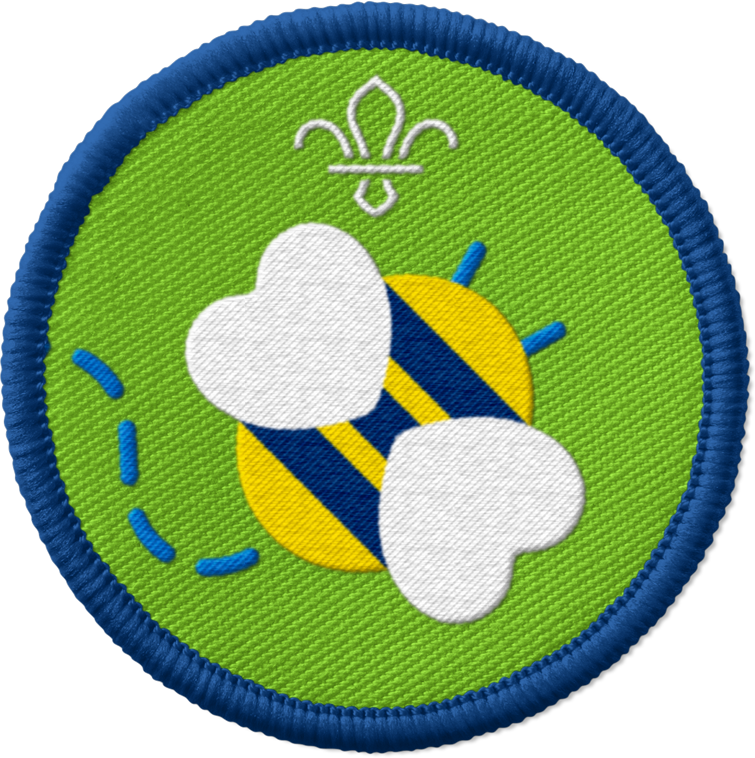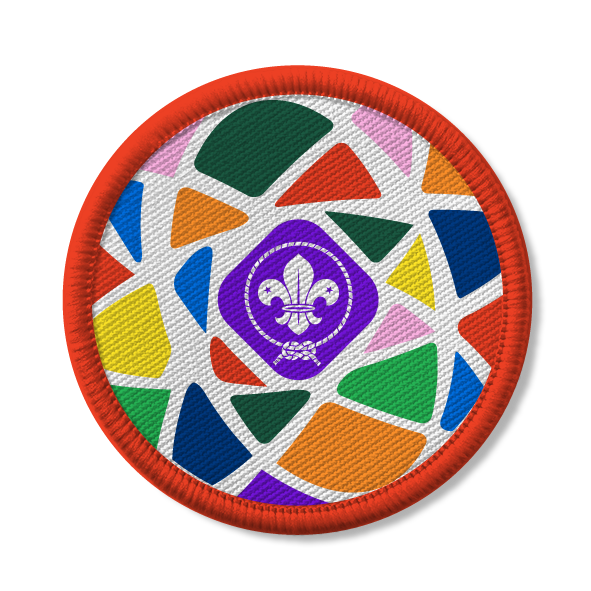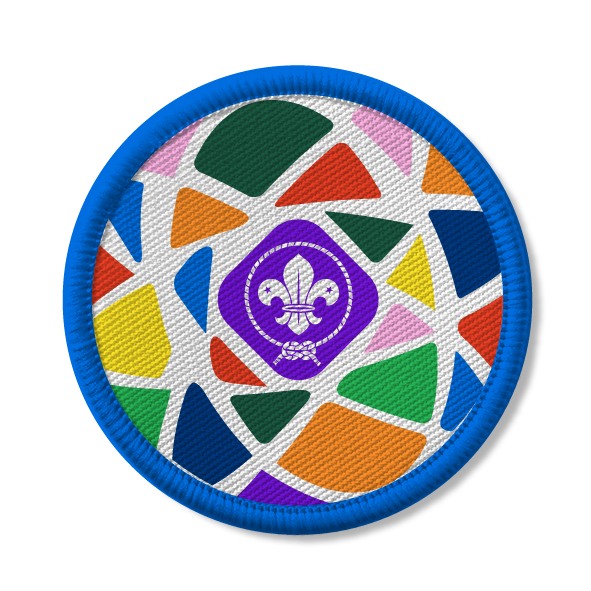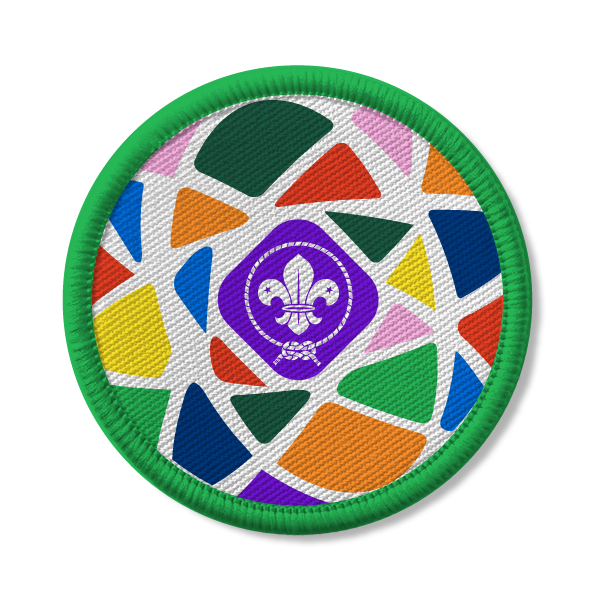
Feed the butterflies
You’ll need
- A4 card
- Coloured pens or pencils
- Cotton wool balls
- PVA glue
- Sticky tape
- Scissors
- Access to water
- Spoons
- Plastic bottle tops
- Sticks
- Sugar
- Cups
Before you begin
- Make sure the plastic bottle caps are clean and don’t have any sharp edges.
- Draw a circle the same size as a bottle cap on each piece of card. Then draw petals around it, to make the outline of a flower. You’ll need to draw a flower for each person.
- Collect the sticks you’ll use to hold up the feeders. You could use pieces of bamboo cane or recycled plastic straws.
- If you’re looking for an alternative butterfly feeder that doesn’t use bottle tops, you can use paper plates and string. Make some holes around the edge of the plate, thread some string through the holes, and hang it outside with some old mushy fruit on for butterflies to snack on.
- Decide how you want to organise the group and share out the resources. You might want to split everyone into smaller groups that share equipment, or you might decide that everyone will work in pairs to make their butterfly feeders.
Story time
- Everyone should sit in a circle.
- Someone should read What do Butterflies eat? by Jess Connett.
- After reading the story, everyone should take some time to reflect on it as a group. We’ve included some questions to help you reflect in the pink box below.
Bartosz was a beautiful swallowtail butterfly. He had black and yellow wings with delicate red and blue spots on his back.
It was a sunny morning, and Bartosz flew happily over the fields and the meadows. He flew over the stream and the bridge. He flew over the factories and the houses.
Wait! That’s not right!
Bartosz was confused: he must have taken a wrong turning. He was flying over gardens with trampolines and sheds.
Bartosz began to feel very tired. It was a long time since he’d had breakfast in the meadow. He flew lower and lower. He could see some children playing in a garden. They looked friendly. He landed on a big green plant to rest.
‘Wow! Look at this butterfly!’ said Nora. Everyone came to look. Bartosz flapped his wings but he was too tired to fly away.
‘It looks like it needs some food,’ said Annie.
Annie, Nora and Lance ran into the house to find out what butterflies eat. Annie came out with a bag of sugar. Nora carried a banana. Lance took off his sweaty socks and carried them at arm’s length.
‘Phew!’ everyone said, holding their noses.
Annie mixed some sugar into her glass of water. The sugar water would be a bit like the nectar that butterflies drink from flowers. Annie poured a little into the spoon and put it on the table.
Nora peeled the banana and put it next to the spoon. It had gone black in the fruit bowl and nobody wanted to eat it. Overripe fruit is sugary and can give butterflies an energy boost.
Lance put his socks on the table. He knew that butterflies need salts as well as sugars. A diet only made up of one thing isn’t as good as a diet made of lots of different things.
The three friends crept back the house and watched Bartosz.
He fluttered off the plant and onto the table. What a feast!
He sucked up some sugar water with his proboscis, which was like a straw. Instantly he felt energised.
He landed on the banana and tasted it through special pads in his feet. He nibbled at some of the squishy bits. Mmm!
But all this sweetness was getting a bit sickly. What about the salt?
Bartosz spotted the socks. Sweating leaves salts behind on our skin, and Lance’s sweat had rubbed onto the socks. To a butterfly it tasted delicious!
‘The butterfly likes all the food we put out for him,’ said Nora. ‘But his favourite is definitely Lance’s smelly socks!’
By Jess Connett
All about butterflies
- Everyone should take it in turns to share what they know about butterflies. Has anyone ever seen a butterfly?
- The person leading the activity should explain that butterflies aren’t just beautiful to look at – they do some important jobs too. For example, butterflies help plants by moving pollen around.
- The person leading the activity should explain that butterflies could do with some help from people. They don’t have as many places to live as they used to, and there are fewer flowers for them to get their food from too. People can make sure that butterflies have enough to eat by making butterfly feeders.
How to make a flower feeder
- Use some brightly coloured pens or pencils to colour in a flower. Bright colours will help to attract the butterflies.
- Carefully use suitable scissors to cut around the flower shape.
- Stick a bottle cap onto the middle of the flower with glue or sticky tape.
- Use glue or sticky tape to attach a stick or straw to the back of the flower so it can stick in the ground like it’s growing.
Make your nectar
- The person leading the activity should help everyone mix a solution that’s one part sugar and four parts water. They should explain that this is like the nectar that butterflies get from real flowers.
- Everyone should take it turns to give the mixture a stir. Can they see the sugar begin to dissolve?
- Everyone should take a piece of cotton wool. They should dip it in the sugary water or use a spoon to put some sugary water onto the cotton wool.
- Everyone should carefully push their cotton wool inside the bottle cap in the middle of their flower.
Place your feeders
- Everyone should find somewhere outside to put their butterfly feeders.
- Everyone should keep an eye on their feeders. When the cotton wool gets dry, they should top it up with some more sugary water.
- In the future, if anyone wants to get rid of their butterfly feeder, they should do their best to recycle or reuse each of the parts.
- A butterfly starts its life as an egg, then it becomes a caterpillar, and finally it turns into a colourful butterfly.
- Butterflies live in lots of places all over the world. The biggest butterfly in the world is over 25cm from the tip of one wing to the tip of their other wing! Show everyone roughly how big this is. How would they feel if they saw a butterfly that big in the park?
- In the UK, butterflies love to live in meadows or gardens that have lots of flowers.
- People sometimes think that butterflies have two wings, but they actually have four wings.
- Butterflies don’t actually eat their food; they just drink it. They drink nectar (a sugary liquid) from plants.
- Butterflies help move pollen from one plant to another plant of the same type. Pollen is a very fine powder that plants make. When butterflies are busy drinking nectar from the plants, pollen gets stuck to their legs. When they go to the next plant, some pollen falls off onto that plant. Plants use this pollen to make seeds or fruit, and then more plants can grow.
- Butterflies taste with their feet! When they land on something, they can tell if it’s good to eat or not. Would anyone like to be able to taste with their feet?
- There are lots of different types of butterflies; different types are different colours and have different patterns. The Wildlife Trusts have some pictures and information about the different types of butterflies you might see in the UK. The Woodland Trust has made a great butterfly spotter sheet.
Reflection
This activity helped everyone to think about how important nature is and what they can do to help.
What do butterflies eat?
- How did Annie, Nora and Lance help Bartosz the butterfly?
- What other animals could you help feed in the garden?
All about butterflies
- What did everyone find out about butterflies?
- What do people think it’s like to be a butterfly? Would they like to be a butterfly?
Make your flower feeders
- Did anyone find any parts of the activity a bit tricky?
- How did people work together to make their feeders? Who helped other people? Who was happy to be helped?
Place your feeders
- Why is it important to help bugs like butterflies and bees?
Safety
All activities must be safely managed. You must complete a thorough risk assessment and take appropriate steps to reduce risk. Use the safety checklist to help you plan and risk assess your activity. Always get approval for the activity, and have suitable supervision and an InTouch process.
- Scissors
Supervise young people appropriately when they’re using scissors. Store all sharp objects securely, out of the reach of young people.
- Glue and solvents
Always supervise young people appropriately when they’re using glue and solvent products. Make sure there’s plenty of ventilation. Be aware of any medical conditions that could be affected by glue or solvent use and make adjustments as needed.
- Rubbish and recycling
All items should be clean and suitable for this activity.
- Animals and insects
Be aware of the risks before interacting with animals. Be aware of anyone with allergies, and make alternative arrangements for them.
- Gardening and nature
Everyone must wash their hands after the activity has finished. Wear gloves if needed. Explain how to safely use equipment and set clear boundaries so everyone knows what’s allowed.
- It’s up to you how much you prepare beforehand and how much you get everyone to do themselves.
- Everyone could draw their own flowers. You could help them get started by drawing the circle the bottle top will go in – people could draw the petals around it.
- Some people might struggle with using scissors. Make sure that helpers are there to help as much as needed.
- Some people might not like how it feels to touch the cotton wool. They could use a spoon to drip the sugary water onto the cotton wool, and someone else could put it in their bottle top for them.
All Scout activities should be inclusive and accessible.
If you’ve taken your butterfly feeder home, keep an eye on it and see if you can spot any butterflies having a snack. Don’t worry if you don’t spot one – they’re more likely to visit when it’s quiet and there’s no one around. You might see bees buzzing around too – your butterfly feeder will help them as well!
You could also try to spot butterflies when you’re out and about. You could use the butterfly spotter sheet from The Woodland Trust to find out what type of butterfly you’ve spotted.
Everyone should have the chance to share what they already know about butterflies and their ideas about how we can help them.
Everyone can help decide where to put the butterfly feeders.



